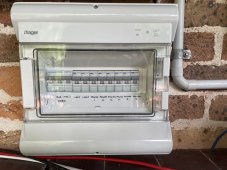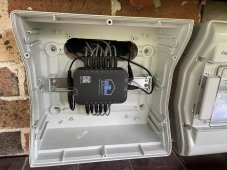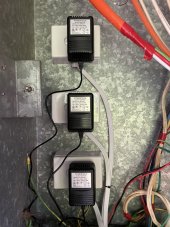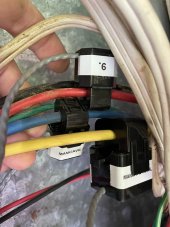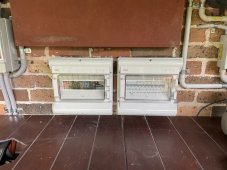Couple of updates:
1. Did some basic maintenance of my Yamaha inverter generator.
As usual it starts first turn of the key without fuss. Ran the generator for about 15-minutes or so as it doesn't see much duty, then an oil change and put the starter battery on the trickle charger for the afternoon. I have a trickle charger plug permanently connected to the battery so I can easily plug it in whenever needed. I did that because the battery is inside the generator's casing, so no need to unscrew the access panel to get to the battery.
2. Added new Home Assistant automations to control the level of supplemental "grid" charging based on how much spare grid-tied PV output capacity there is. Put my first draft of the automations into play this afternoon. Seems to be working OK, may need some fine tuning.
I already had an automation which turned on or off supplemental "grid" charging based on:
- battery state of charge and how much energy would be required to reach 100% SOC
- off-grid PV solar output forecast for the rest of the day, IOW whether the small 2.22 kW off-grid PV array would have sufficient capacity to fully charge the battery by the end of the day
- whether there was enough spare PV capacity from the 11 kW grid-tied PV array to divert some of that to supplement the battery charging.
I do not import energy from the grid for charging the battery, unless I invoke "Storm Mode".
However I was not previously able to automate the level of supplemental charging. It was set at a fixed 10 A (about 500 W). This was due to a bug with the way Solar Assistant orders inverters and the different system parameters which are controllable for Inverter #1 and Inverter #2. My primary inverter was listed in SA as Inverter #2, and so additional parameter settings such as max grid charge current were not functional.
However yesterday I managed to get SA to reconfigure the inverters and have their logical position swapped and my primary inverter is now Inverter #1 in Solar Assistant. So now these additional parameter settings are accessible for automation.
So what happens now is if the the system decides supplemental "grid" charging is required, it will ramp up and down the level of charging based on how much excess grid-tied PV capacity there is. This can be done in 10 A (DC) steps, which is approximately 500 W each step up to 120 A (~ 6kW). There is also a 2 A (~100 W) option.

Here we can see the battery is at 89% SOC and requires another 3.3 kWh to be fully charged. The Off-grid PV Forecast is today's full day production estimate taken from the Solcast PV forecast integration. Behind the scenes it calculates how much the balance of day forecast is.
Grid Charge Req'd tells me whether the system thinks it need some supplemental energy to complete a full charge. The system monitors my grid-tied PV and because sufficient excess capacity is available it is providing supplemental charge power. In this case it's been set to 30 A (~1500 W) but the inverter only uses what it needs to remain within the overall 50 A current limit I have set for this battery.
Meanwhile the battery is charging at 2.55 kW, while the off-grid PV array is generating 1.4 kW.
It's good for days like today when it's on/off clouds/rain/sun and the small off-grid array would never fully charge the battery but the larger grid-tied array can definitely provide a decent boost.













